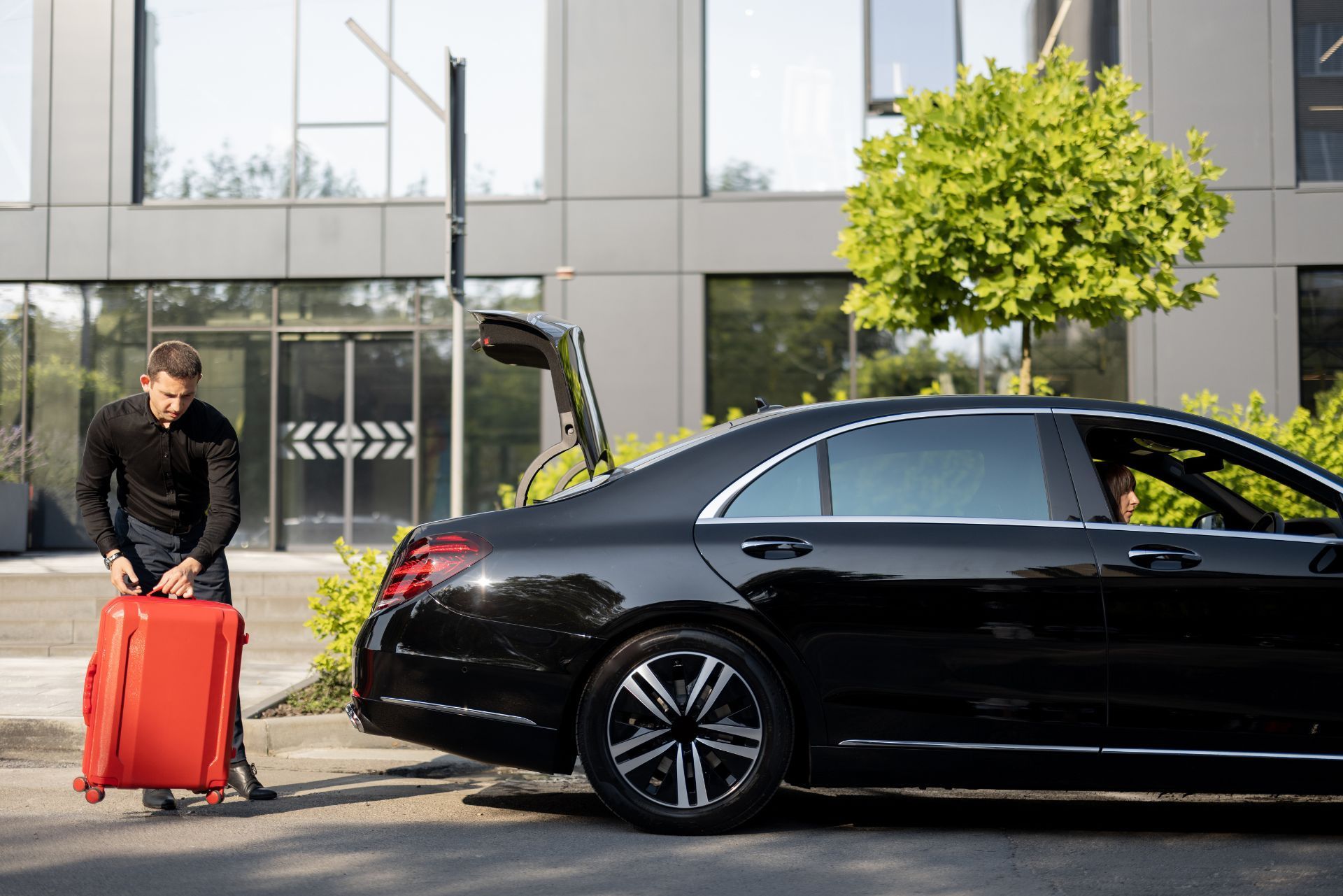California Limo & Black Car Service Insurance

9:00am - 6:00pm Mon-Fri
Will Reply in 15min*
Top 3 Recommended Policies
Index
Why Insurance is Critical for California Limo and Black Car Services
California Insurance Requirements for Limo and Black Car Services
Types of Insurance Coverage for Limo and Black Car Services
Factors Affecting Insurance Costs for California Limo and Black Car Services
Tips for Choosing the Right Insurance Provider
Risk Management Strategies to Lower Insurance Costs
Common Challenges and How to Overcome Them
Operating a limousine or black car service in California is a lucrative and prestigious business opportunity, but it comes with significant responsibilities—especially when it comes to insurance. The unique nature of chauffeured transportation demands specialized insurance coverage to protect your business, drivers, passengers, and assets. Understanding California’s insurance requirements, risks, and best practices is crucial for any limo or black car operator.
This comprehensive guide explores everything you need to know about California limo and black car service insurance, from mandatory coverage to risk management strategies. Whether you’re an established operator or just starting out, this article will help you navigate the complex insurance landscape with confidence.
Why Insurance is Critical for California Limo and Black Car Services
Limousine and black car services inherently involve higher risks than typical personal vehicle use. These risks stem from factors such as:
- Transporting multiple passengers, often for special events or corporate clients
- Operating luxury vehicles that are expensive to repair or replace
- Driving in busy urban areas like Los Angeles and San Francisco, where traffic congestion and accident rates are high
- Meeting strict regulatory and contractual obligations
Insurance protects your business against financial losses resulting from accidents, injuries, property damage, and liability claims. Without adequate coverage, a single incident could jeopardize your entire operation. In addition to safeguarding your financial interests, having the right insurance can enhance your business's reputation. Clients are more likely to choose a limo service that can demonstrate comprehensive coverage, as it reflects professionalism and a commitment to safety.
According to the California Department of Motor Vehicles (DMV), commercial passenger carriers must meet stringent insurance requirements to operate legally. Failure to comply can result in fines, suspension of operating authority, or even criminal penalties. Moreover, the insurance landscape is constantly evolving, and it’s essential for operators to stay informed about changes in regulations that could impact their coverage needs. Regularly reviewing your insurance policy ensures that you are not only compliant but also adequately protected against emerging risks.
Key Risks Faced by Limo and Black Car Operators
Understanding the specific risks your business faces is the first step in securing the right insurance. Common risks include:
- Passenger injuries: Accidents can cause injuries to passengers, leading to costly medical claims and lawsuits.
- Vehicle damage: Luxury vehicles are costly to repair, and accidents or vandalism can lead to significant expenses.
- Driver liability: Drivers may be held personally liable for negligence or unsafe driving practices.
- Contractual risks: Many clients require proof of insurance before booking services, especially corporate clients.
Additionally, the nature of the events for which these services are often hired—weddings, proms, and corporate gatherings—means that the stakes are particularly high. A mishap not only affects the immediate financial situation but can also lead to reputational damage that may take years to rebuild. Furthermore, as technology evolves, so do the risks associated with it. With the rise of ride-sharing apps and increased competition, traditional limo services must adapt and ensure they are not only compliant with insurance requirements but also equipped to handle unique challenges like cyber liability, especially if they collect personal data from clients for bookings.

California Insurance Requirements for Limo and Black Car Services
California law mandates specific insurance minimums for commercial passenger carriers, including limousines and black cars. These requirements are designed to ensure passenger safety and financial responsibility.
Minimum Liability Coverage
The California Public Utilities Commission (CPUC) regulates limo and black car services and requires operators to carry minimum liability insurance. The minimum coverage amounts depend on the vehicle’s seating capacity:
- For vehicles with 7 to 15 passengers: at least $1.5 million in combined single limit liability coverage
- For vehicles with more than 15 passengers: at least $5 million in combined single limit liability coverage
This coverage protects against bodily injury and property damage claims arising from accidents involving your vehicles. It is crucial for operators to understand that these limits are not just arbitrary figures; they reflect the potential risks associated with transporting multiple passengers and the financial implications of accidents. In a state as populous and busy as California, the likelihood of incidents occurring increases, making these insurance requirements vital for protecting both the business and its clients.
Additional Required Coverages
Beyond liability insurance, California operators typically need:
- Commercial Auto Physical Damage Coverage: Covers repairs or replacement of your vehicles due to collision, theft, or vandalism.
- Workers’ Compensation Insurance: Required if you employ drivers or other staff, covering medical expenses and lost wages if they are injured on the job.
- Uninsured/Underinsured Motorist Coverage: Protects your business if your vehicle is involved in an accident with a driver who lacks sufficient insurance.
These additional coverages are essential in a state where the volume of traffic and the number of uninsured drivers can pose significant risks. For instance, the Commercial Auto Physical Damage Coverage not only safeguards the vehicles but also ensures that operators can quickly return to service after an incident, minimizing downtime and financial loss. Similarly, Workers’ Compensation Insurance is not just a legal requirement; it also fosters a safer working environment, which can enhance employee morale and retention.
Certificates of Insurance and Regulatory Compliance
Clients and regulatory agencies often require proof of insurance through a Certificate of Insurance (COI). The COI must list the insured party, coverage limits, and policy effective dates. Many corporate clients also require operators to name them as additional insureds on the policy.
Compliance with CPUC regulations is mandatory. Operators must file proof of insurance with the CPUC and maintain continuous coverage to keep their operating authority active. This requirement underscores the importance of regular policy reviews and updates to ensure that the coverage remains adequate as the business grows or changes. Additionally, operators should be aware of the potential for audits by the CPUC, which can assess compliance with these insurance requirements, making it imperative to keep meticulous records and documentation of all insurance policies and related communications.
Types of Insurance Coverage for Limo and Black Car Services
While meeting minimum requirements is essential, many operators choose to purchase additional coverage to better protect their business. Here are the primary types of insurance coverage relevant to limo and black car services in California.
Commercial Auto Liability Insurance
This is the core insurance coverage for any commercial vehicle operation. It covers bodily injury and property damage caused by your vehicles. Given the high stakes involved in passenger transport, many operators opt for coverage limits well above the state minimums. This is particularly important in urban areas where traffic congestion increases the likelihood of accidents. Moreover, the reputation of a limo service can hinge on its safety record, making robust liability coverage not just a legal necessity but a business imperative.
Physical Damage Coverage
Physical damage insurance includes:
- Collision Coverage: Pays for damage to your vehicle resulting from a collision with another vehicle or object.
- Comprehensive Coverage: Covers damage from non-collision events such as theft, fire, vandalism, or natural disasters.
Since limousines and black cars are often luxury models, physical damage coverage is critical to avoid significant out-of-pocket repair costs. Additionally, the high value of these vehicles means that even minor damages can lead to substantial financial losses. Operators often choose to invest in higher deductibles to lower their premium costs, but they must carefully weigh this against the potential for high repair expenses in the event of an incident.
General Liability Insurance
This coverage protects your business against claims unrelated to vehicle operation, such as slip-and-fall accidents at your office or garage. It can also cover advertising injury or property damage caused by your business operations. In the hospitality-driven world of limo and black car services, maintaining a safe and welcoming environment for clients is crucial. General liability insurance not only safeguards against financial loss but also enhances the credibility of your business, reassuring clients that you take their safety seriously.
Workers’ Compensation Insurance
California law requires businesses with employees to carry workers’ compensation insurance. This coverage provides medical care and wage replacement for employees injured on the job. For limo and black car services, this typically applies to drivers and support staff. In a service-oriented industry, ensuring the well-being of your employees is paramount, as it directly impacts service quality and customer satisfaction. Additionally, providing comprehensive workers’ compensation can help attract and retain skilled drivers in a competitive market.
Non-Owned and Hired Auto Insurance
This coverage protects your business if you rent vehicles or if employees use their personal vehicles for business purposes. It covers liability and physical damage claims related to these vehicles. As many limo services expand their operations, the need for flexibility in vehicle use increases. This type of insurance not only mitigates risks associated with renting vehicles but also ensures that your business remains protected even when employees are using their own cars to fulfill client requests, thus broadening the scope of your operational capabilities.
Umbrella Insurance
Umbrella insurance provides additional liability coverage beyond the limits of your primary policies. Given the high-risk nature of passenger transport, an umbrella policy can offer valuable extra protection against large claims or lawsuits. This type of coverage is especially important in a litigious society where even minor incidents can escalate into significant legal battles. By having an umbrella policy, limo and black car service operators can ensure that they have a safety net that protects their assets and business continuity in the event of unforeseen circumstances.
Factors Affecting Insurance Costs for California Limo and Black Car Services
Insurance premiums for limo and black car services vary widely based on several factors. Understanding these can help operators manage costs while maintaining adequate coverage.
Vehicle Type and Value
Luxury vehicles such as Cadillac Escalades, Lincoln Town Cars, and Mercedes-Benz sedans typically cost more to insure due to their high repair and replacement costs. Additionally, the age of the vehicle plays a significant role; newer models often come equipped with advanced safety features that can lower insurance rates. However, the allure of high-end vehicles can also attract more theft, which insurers take into account when determining premiums. Operators should consider investing in vehicles that balance luxury with safety and reliability to optimize their insurance costs.
Seating Capacity and Usage
Vehicles with higher passenger capacities or those used for high-risk events (e.g., weddings, proms, airport transfers) may face higher premiums due to increased exposure. For instance, a stretch limousine accommodating 10 passengers will inherently carry more risk than a standard sedan. Furthermore, the frequency of use for special events can also influence costs; operators who frequently service high-demand occasions may find themselves facing higher premiums due to the increased likelihood of claims. Implementing safety protocols and driver training specific to these events can help mitigate risks and potentially lower insurance costs.
Driver Experience and Safety Records
Insurers evaluate driver qualifications, training, and accident history. Employing experienced, well-trained drivers with clean records can reduce premiums. Additionally, operators who invest in ongoing driver education and safety programs can demonstrate their commitment to safety, which may further enhance their standing with insurers. This proactive approach not only fosters a culture of safety within the company but can also lead to discounts on insurance premiums over time, as insurers often reward businesses that prioritize risk management.
Geographic Location and Routes
Operating in congested urban areas with higher accident rates, such as Los Angeles or San Francisco, generally leads to higher insurance costs compared to rural areas. The specific routes taken can also impact risk; areas known for heavy traffic or high accident rates can contribute to increased premiums. Operators should analyze their typical routes and consider strategies to minimize exposure, such as avoiding peak traffic times or selecting safer, less congested roads. Additionally, understanding local regulations and insurance requirements can help operators navigate the complexities of their geographic area more effectively.
Claims History
A history of frequent or severe claims can increase premiums. Maintaining a good safety record and promptly addressing incidents helps control costs. Insurers often look at the frequency and severity of past claims when calculating premiums, so operators should prioritize risk management strategies that reduce the likelihood of accidents. This includes regular vehicle maintenance, comprehensive driver training, and implementing a robust incident reporting system. Furthermore, operators may benefit from establishing relationships with insurance agents who understand the unique risks associated with limo and black car services, allowing them to tailor their coverage to better fit their needs while keeping costs manageable.
Tips for Choosing the Right Insurance Provider
Selecting an insurance provider who understands the nuances of the limo and black car industry is vital. Here are some tips to guide your decision:
Look for Industry Expertise
Choose insurers or brokers specializing in commercial passenger transportation. They will be familiar with California regulations and industry-specific risks.
Compare Coverage Options and Limits
Review policy details carefully to ensure coverage meets or exceeds regulatory requirements and your business needs. Pay attention to exclusions and deductibles.
Check Financial Strength and Reputation
Work with insurers with strong financial ratings and positive customer reviews to ensure reliable claims handling.
Request Customized Quotes
Provide detailed information about your fleet, operations, and drivers to receive accurate quotes tailored to your risk profile.
Consider Bundling Policies
Bundling multiple policies (e.g., auto, general liability, workers’ compensation) with one insurer may yield discounts and simplify management.
Risk Management Strategies to Lower Insurance Costs
Beyond purchasing insurance, implementing robust risk management practices can reduce the likelihood of accidents and claims, thereby lowering premiums.
Implement Comprehensive Driver Training
Regular training on defensive driving, vehicle operation, and customer service helps ensure driver competence and safety.
Maintain Vehicles Properly
Scheduled maintenance and inspections reduce mechanical failures that could lead to accidents.
Establish Clear Safety Policies
Policies on seatbelt use, alcohol consumption, distracted driving, and passenger conduct promote a safe environment.
Use Technology to Monitor Drivers
GPS tracking, dash cameras, and telematics systems provide real-time data to improve driving behavior and document incidents.
Conduct Background Checks
Screening drivers for criminal records and driving violations helps prevent risky hires.

Common Challenges and How to Overcome Them
Operating a limo or black car service in California comes with unique insurance challenges. Awareness and proactive management can help overcome these hurdles.
High Premium Costs
Insurance for luxury passenger vehicles is expensive. To manage costs, operators should shop around, maintain excellent safety records, and consider higher deductibles if financially feasible.
Regulatory Compliance Complexity
California’s regulatory environment is complex and evolving. Staying informed through CPUC updates and industry associations is critical.
Claims Handling and Disputes
When accidents occur, prompt and thorough documentation is essential to support claims. Working with experienced insurance adjusters and legal counsel can help resolve disputes efficiently.
Coverage Gaps
Standard policies may not cover all risks, such as limousine-specific liabilities or special event exposures. Operators should consult with specialized brokers to identify and fill gaps.
Conclusion
California limo and black car service insurance is a vital component of running a safe, compliant, and successful business. Understanding the state’s insurance requirements, the types of coverage available, and factors influencing costs empowers operators to make informed decisions.
By partnering with knowledgeable insurance providers, implementing strong risk management practices, and maintaining regulatory compliance, limo and black car services can protect their assets, drivers, and passengers while enhancing their reputation and client trust.
Investing in the right insurance coverage is not just a legal obligation—it’s a strategic move that safeguards your business’s future in California’s competitive transportation market.



